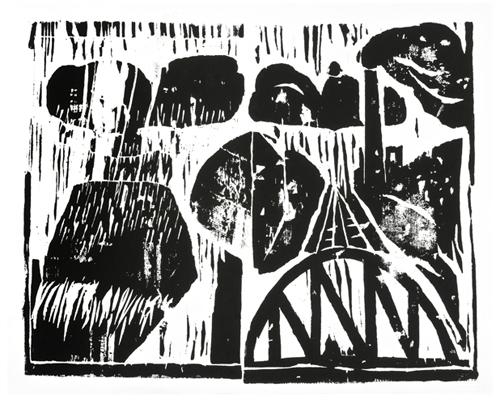MIKE RECOMMENDS: CORBETT vs. DEMPSEY
Corbett vs. Dempsey is a private art gallery specializing in mid-20th century American art, with an emphasis on Chicago painting and works on paper from 1940 to 1970. From their website:
“We represent a diverse group of artists and artist estates, with historical works drawn from various American modernist traditions, including figural expressionism, American scene, social realism, surrealism, magic realism, the Chicago imagist groups, and myriad middle-American approaches to abstraction. Corbett vs. Dempsey also works with contemporary artists who connect, in one way or another, with these lineages. We pledge no specific stylistic allegiances, but instead choose to support and pursue that art which moves us. We love the American modernist traditions and their kin, but are also enthusiastic about Fluxus and the expanded arts scenes of the ’60s in the U.S., Europe, Japan, South America and elsewhere, and will carry art and artifacts of this movement when available. And we are always on the lookout for unusual objects, be they artistic, industrial, musical or “other.” As a special area of concern, we’re fascinated by those intersections between the visual arts and music – places where the arts cross paths, as they do often in modernist painting and jazz, for instance.”
Currently CvsD is showing “Peter Brötzmann Wood & Water: Works on Paper”, which runs until March 27, 2010. This is the gallery’s second solo exhibition of artwork by Peter Brötzmann, who is perhaps best known as a musician, but has been consistently making and occasionally exhibiting visual art in Europe and America since 1959. In 2007, CvsD mounted the first major survey of Brötzmann’s artwork in the United States, a show that focused heavily on his large paintings and constructions. Now, two years later, Wood & Water features his recent small-scale work on paper, including woodcut prints and watercolors.
Also part of this exhibition (in what CvsD calls “The East Wing” of the gallery), is work by Chicago artist Harold Haydon. In 1936, age 27, Haydon set out to make an illuminated version of Fyodor Dostoevsky’s 1866 classic Crime & Punishment. His notion was to create ink drawings for the novel that would overlay the text on each page, illustrating the action, for instance, as Raskolnikov kills Alena or as he confesses to Sonya. The process began with rough sketches for a total of 10 sample pages. These were refined over several generations, then the final version was transferred to a typeset page, sitting right over the scene that to which the image referred. For some reason, Haydon’s illustrated Crime & Punishment was never brought to fruition. We are left with this very suggestive selection of ten finished proof pages, presented with some of the artist’s initial sketches and a page of font calligraphy.
For more information about this show and the gallery, please visit Corbett vs. Dempsey’s website.



